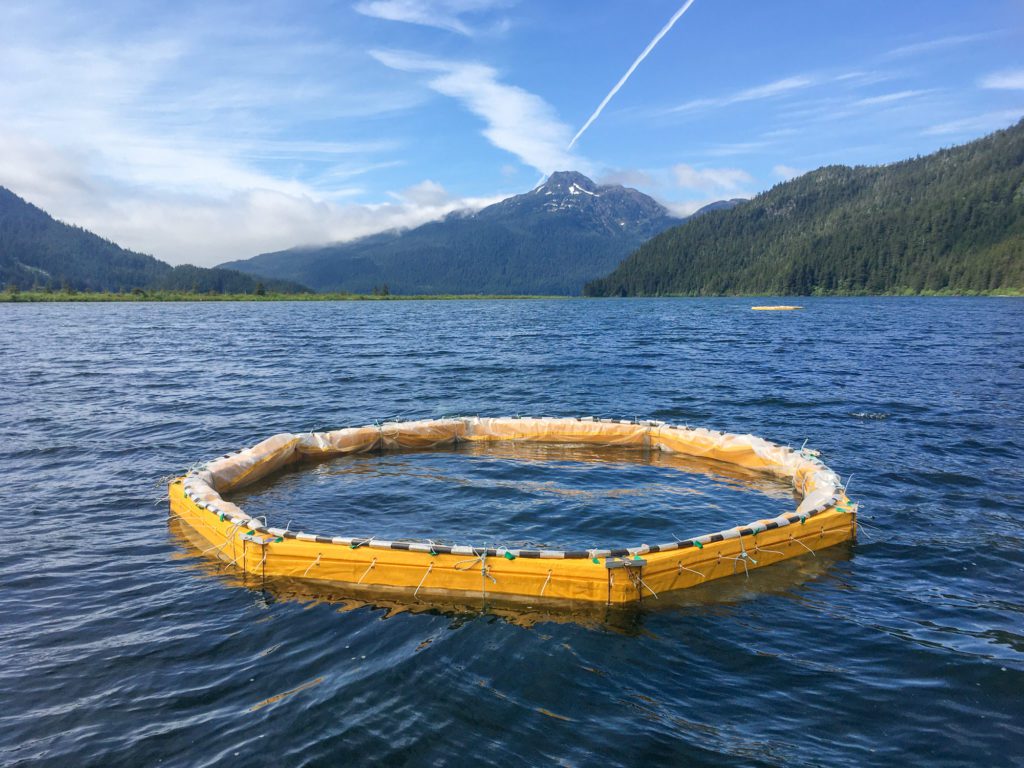
Stormy Haught, Prince William Sound Zone Aquatics Program Manager for the Chugach National Forest, Cordova Ranger District and his team are beginning to install limnocorrals on Eyak Lake. Limnocorrals are floating enclosures that are anchored to remain in a fixed location in the lake with a mesh size that prevents fish from moving in or out. The term limnocorral comes from the word limnology, the study of inland bodies of water (to include lakes, rivers and streams), and the word corral, a circular enclosure.
In previous years, the limnocorrals were put on McKinley Lake; this year, installation will focus primarily on Eyak Lake. The paired limnocorrals, six in total, will be placed in the Arm by Queens Chair, Middle Arm and by the North Arm. The project is anticipated to last through mid-September.
“It’s a study designed and aimed at answering the question of what the effects of invasive Elodea are on the aquatic ecosystem, most notably on salmon. In the Chugach National Forest and Alaska salmon are an important resource with our large commercial fishery. This project was initiated by Gordon Reeves from the Pacific Northwest Research Station.
“It’s a paired study; we locate some of the net pins over patches of Elodea and others over patches of native vegetation. We clear each placed limnocorral of fish and introduce juvenile fish to each net pin, marking the fish otoliths before we introduce them to the net pin… In Eyak Lake we are focusing on sockeye salmon.
An otolith is a stone in the ear of a fish that is commonly used to determine the age of fish. The goal is to understand what the food web consequences are of native versus invasive vegetation,” continued Haught.
After the fish are introduced to the limnocorrals and it’s all said and done, the team will take a look at the fish and study the otolith growth increments to determine whether there were any significant differences in growth of juvenile salmon in the various vegetation types, Haught explained.





